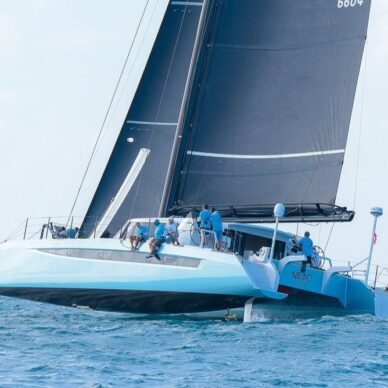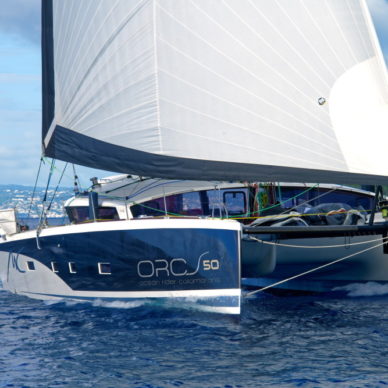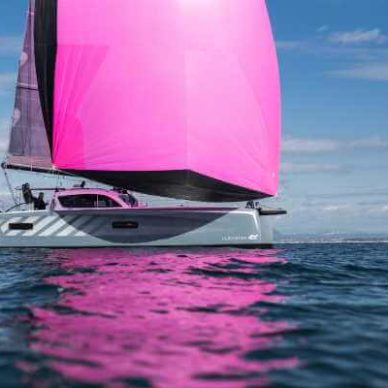Description
Atlantic Catamarans were building fast cruising cats with forward cockpits when Gunboat was still in short trousers, and the most famous of the range of these performance cats is the Atlantic 57. In fact, Peter Johnstone, the original Gunboat owner, was inspired by many of the features of the Atlantic range – the forward cockpit for example. Read our Gunboat 62 review to find out more on that one.
They come in various rig configurations, but the most popular is the cutter rig with the self tacking jib boom and genoa. These light cats with a powerful sail plan are famous for their fast acceleration and ability to get going in light air.
Chris White has been designing these kinds of performance-cruising multihulls for over 40 years and they are very fast on all points of sail. These are stiff , light boats that look beautiful : a racer on the outside and a traditional luxury yacht on the inside. We are in the same territory as the Dazcat 1495 and Marsaudon Composites. They will be ahead of the likes of the HH OC50 when rounding the first marker.
Photos: Credit “Cruise of the Boundless” and TeamNogal.com.
Pros
- These cats are fast. You will see speeds approaching or even matching more expensive luxury performance cruising catamarans at a price comparable to, say, a Catana. A Marsaudon Composites ORC57 catamaran would be a good comparison to a newer boat.
- Atlantic 57s are set up for short handed or even single handed sailing. That´s the beauty of the forward cockpit – you never leave the safety of this sail handling area for raising and lowering the mainsail and reefing. This set up has inspired later designs like the KC54 from Kinetic and the Gunboats of course.
- Visibility is about as good as you can get from the mast looking forward, or from the inside helm forward in the saloon. And that helps you to avoid collisions – another plus factor on the safety front.
- With those assymmetrical daggerboards you will sail upwind as well or even better than a monohull. She´s fast on all points of sail.
- The Atlantic 57 has very strong fixed fins on the hulls. That really protects your hulls, props and rudders in the event of a grounding. The fins are deeper than the rudders.
- Ventilation. With that forward cockpit door and the aft sliding doors open, you couldn´t ask for better ventilation.
Cons
- The flip side to that forward cockpit is that it can get wet in rough weather. Sure, you can helm from inside, but what about when you need to reef? It´s not as bad on the leeward side, but in filthy weather you are going to have your oilies on and you´ll be dripping all over that nice saloon.
- The 57 has been set up for short handed sailing, but she´s still reasonably complex to sail. Once you know your boat, this gets easier over time of course, but those asymmetrical daggerboards, for example, like to be switched over on every tack, otherwise you are going to lose the benefit. Compared to other cats on the same performance level, she´s pretty easy to sail though.
- The configuration is galley down. This could be seen as a “pro” in many cases (more space up top, safer when cooking, safer cooking on a watch system) but I include it as a “con” simply because this is a deal breaker for many people who like a big view of the horizon when cooking and who like to feel connected to the main living space. Ultimately, this is a matter of personal preference. Galley down works in Prouts and it works in Gunboat 55s.
The Atlantic 57 evolved from the 55: she´s a large blue water cruising cat with a forward cockpit where all the sailing happens, coupled with a cosy helm in the saloon, a big “back porch” for relaxing and plenty of space down below in those twin hulls. Owners are passionate about this configuration.
One piece of feedback I got from an owner was “FWIW, we respectfully disagree with your listing the forward cockpit as anything other than the highest point on the “Pro” list. The forward cockpit on the A57 is a working cockpit as well as a living cockpit. Making it part of the negative list, even when going to weather, would be like listing “engine noise” as a negative point of a Ferrari. The design and size of the boat keeps it above any spray even when going to weather 90% of the time. But I get it … it is hard to grasp how wonderful it is until you sail it”.
Well, I can´t really argue with any of that, but you are going to be more exposed than a covered helm: all boats are compromises and it does have its advantages as well.
Try not to weigh your Atlantic 57 down with too much stuff, or you´ll negate the whole purpose of this yacht- and that´s to get there before anyone else. This is a boat that was designed to clock off 300 mile days and over.
The A57 carries a little more sail than the A55 in the fore triangle area. And the catamaran was also powered up with assymmetrical daggerboards. In addition, the newer design comes in around 2/3 of a tonne lighter (1500 lbs)
Construction
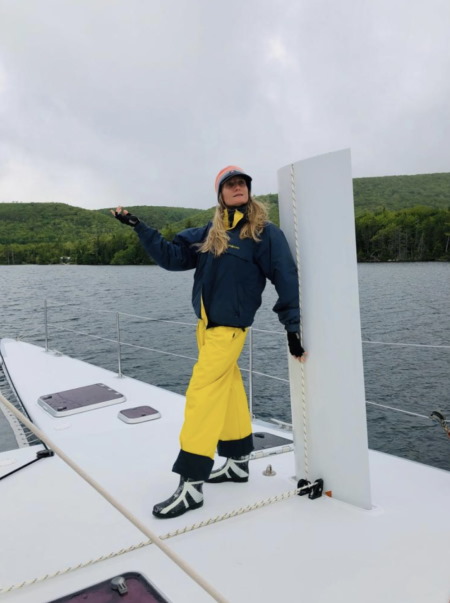 There are various yards around the world that are skilled at bringing these designs to life, principally Alwoplast in Chile and others on the east and west coasts of the US (Aquidneck Custom Composites), and in South Africa. She is built with epoxy resin, triaxial E-glass, and Core-Cell and AirLite foams.
There are various yards around the world that are skilled at bringing these designs to life, principally Alwoplast in Chile and others on the east and west coasts of the US (Aquidneck Custom Composites), and in South Africa. She is built with epoxy resin, triaxial E-glass, and Core-Cell and AirLite foams.
Her core is thermoformed and her laminates vacuum bagged. Add a Full Carbon rig by Hall Spars and Titanium extras and you have one beautiful machine.
An Atlantic 57 weighs in at only 12 metric tonnes (26,500 lbs) light. Carbon-fiber is used in the crossbeam and hulls.
The hulls are slender instead of plump and purist – there are no bumps or chines, tricks that Catana uses for instance to pad out the accommodation space.
The bridgedeck height has been designed to minimize any loss of energy from the waves through slap: there is over 1 metre (3.5 feet) of clearance on this boat for waves to pass harmlessly through.
On Deck
That forward cockpit is the big USP and it´s a configuration that has been copied by many luxury performance brands since. The boat accelerates quickly in gusts and from this vantage point you are in the thick of it.
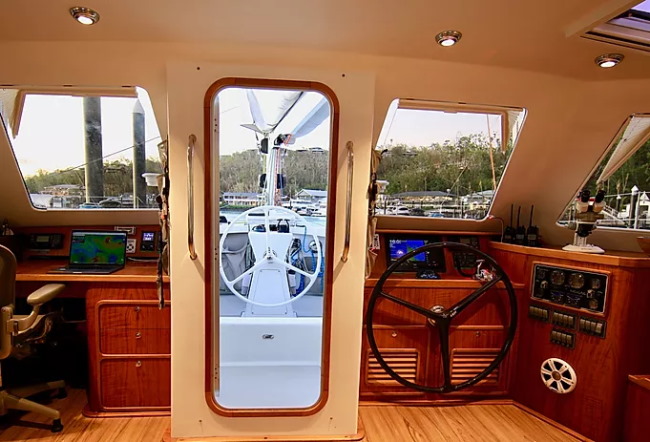 The wheel and all of the sail handling is located in front of the saloon, behind the mast.
The wheel and all of the sail handling is located in front of the saloon, behind the mast.
Atlantic 57s are fast to windward under staysail and mainsail and with the genoa out, she´s even faster off the wind sailing at around 70% of wind speed in a force 4 and up to the mid teens and over when reefed down up to a force 7.
You´ll be seeing some 20 knot surfs.
For shorthanded sailing, the cutter rig is perfect: unleash the genoa in light air off the wind, and then switch to the staysail on the jib boom when the wind freshens.
Boards
Atlantic 57 cats come with 2.7m (9 foot) fins that protect the hull in the event of a grounding. It also means that you can beach these cats. They come with asymmetric daggerboards that provide lift upwind. An Atlantic cat will match or better a monohull when close hauled.
Sailing
Downwind, you can bring out the asymmetric cruising spinnaker. Electric Harken winches help tame the loads on the the 87 sq metre (933-square-foot) mainsail,
The helming and sail handling is all done from that forward cockpit, but it´s snugly connected to the pilothouse forward in the saloon. There´s a weatherproof cockpit door forward and a sliding door aft, giving you an additional inside helm with great visibility for when the weather turns along with a nav station / control centre, a dining area and a lounging area.
Power
She´s powered with twin 54-HP Yanmars that push the boat along at a crusing speed of 10 knots in calm conditions at 2,500 rpm. That´s the advantage of those sculpted hulls for you. Alternate the engines to save fuel and you will still be pushed along at 8 knots in calm conditions.
Living Space
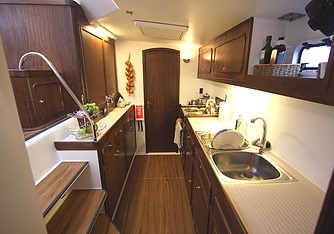 Both hulls have spacious master cabins with a roomy vanity and head amidships. The configuration is galley down, with plenty of working space and room for your cooking, cooling and freezing equipment in the starboard hull. In the port hull, in place of the galley you have room for more berths, an office or a work area for all of your tools. And aft, both hulls have a double berth with a dresser, seat, and locker. Up front in the forepeaks, you´ve got plenty of space to store you sails and fenders.
Both hulls have spacious master cabins with a roomy vanity and head amidships. The configuration is galley down, with plenty of working space and room for your cooking, cooling and freezing equipment in the starboard hull. In the port hull, in place of the galley you have room for more berths, an office or a work area for all of your tools. And aft, both hulls have a double berth with a dresser, seat, and locker. Up front in the forepeaks, you´ve got plenty of space to store you sails and fenders.
It´s up on the main deck where you will benefit from all of that space that comes with a 57 foot catamaran. The saloon area is light and airy at anchor thanks to that forward cockpit door. With the sliding doors open, the breeze flows through. The big back porch is another real winner , a quiet zone away from it all either under way or at anchor. On lucky evenings, you´ll be facing west so you can slowly watch the sun go down with a cold one in hand. If you love the shade, this set up takes some beating- you are well protected from the sun.
And there´s room for al fresco dining out here too, around the adjustable table.
Sailing Blogs: Atlantic 57
Cruise of the Boundless is well worth a read.
TeamNogal is a well put together blog of an Atlantic 57 called Nogal. Read the section where they describe the mods they made to the boat before setting off on their trip.
Summary
If you are in the market for a real sailing cat, the Atlantic 57 has to be on your shopping list. This performance cruising catamaran is competing against the likes of Outremer, Balance and Catana. It´s a design that has gradually evolved over the years and sits at the very top of the field.
Tech Specs and Video
Volume UP on the Video Clip beloe from Team Nogal!

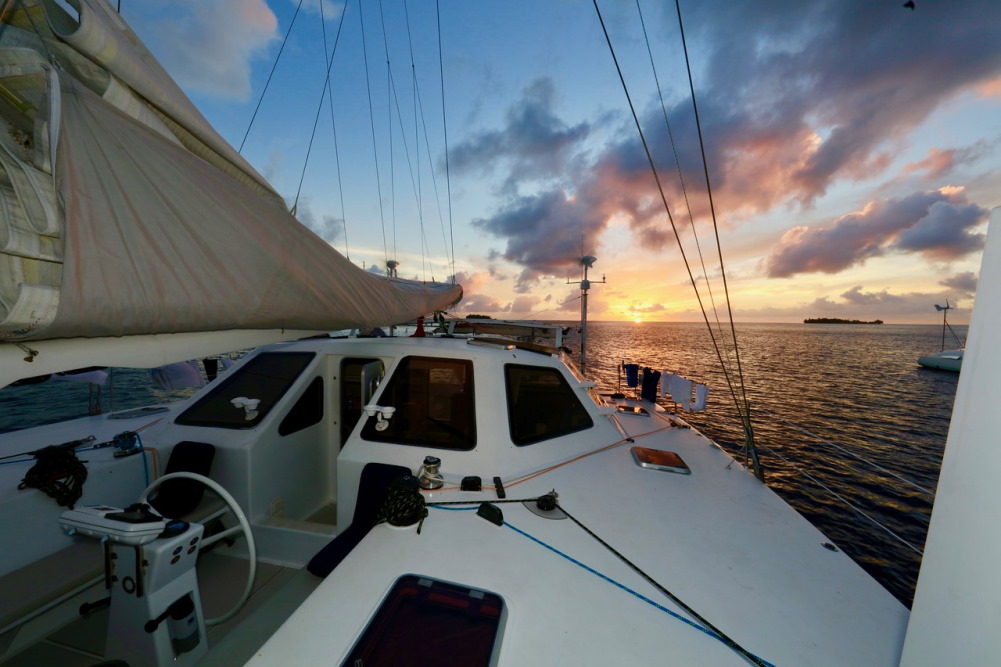
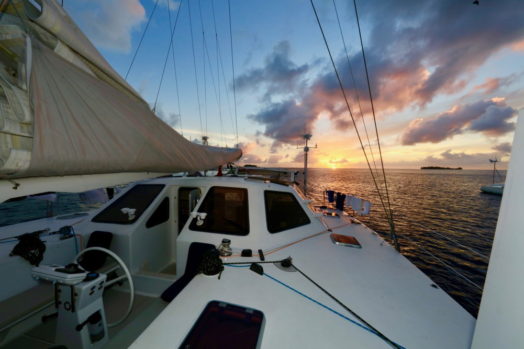
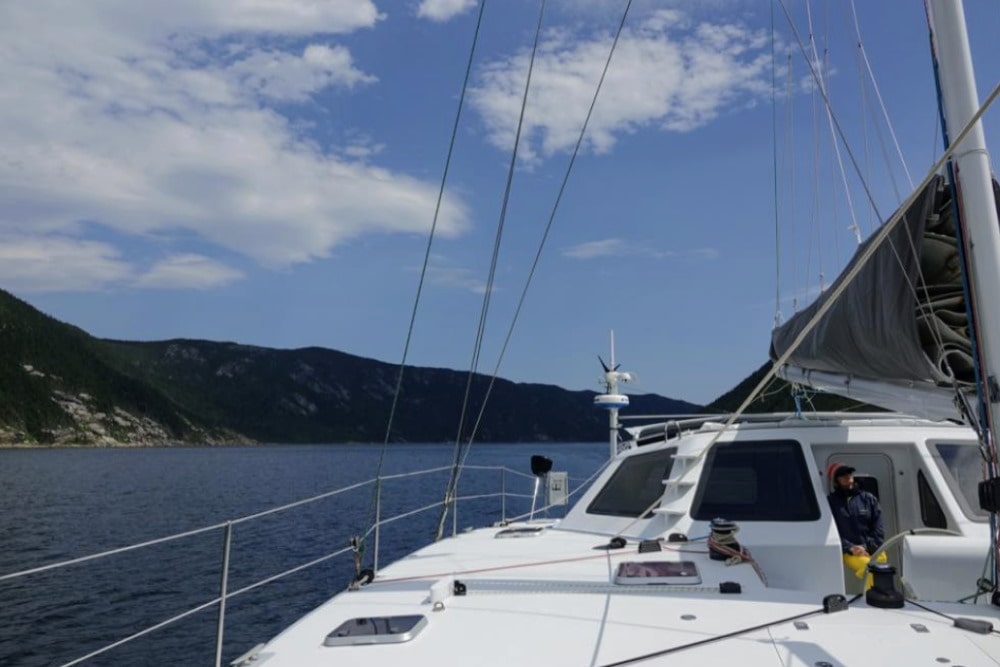
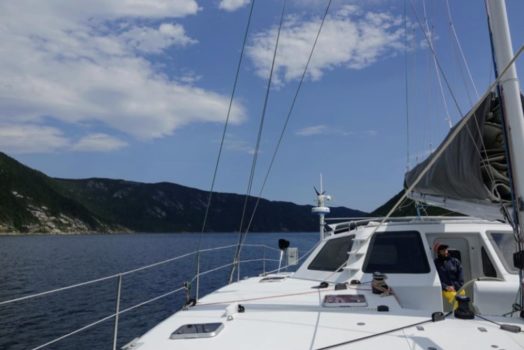
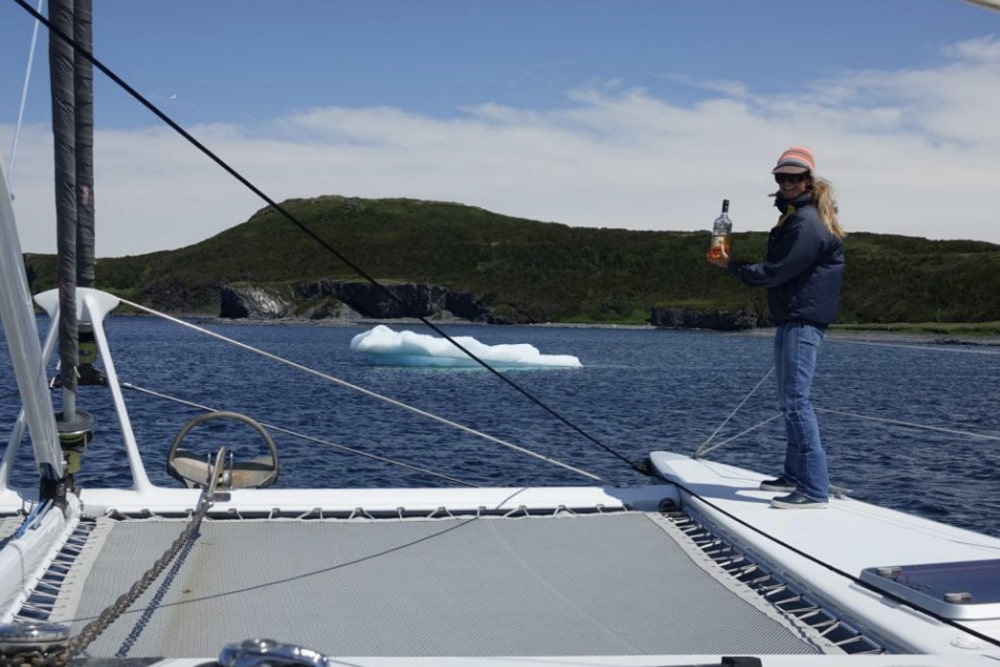
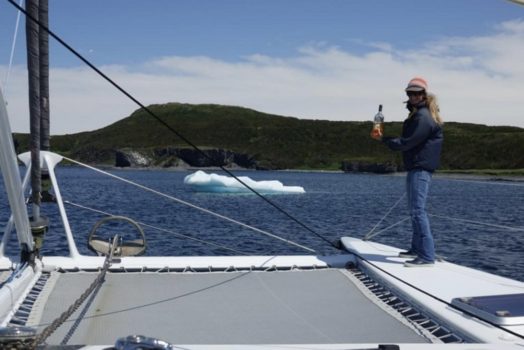
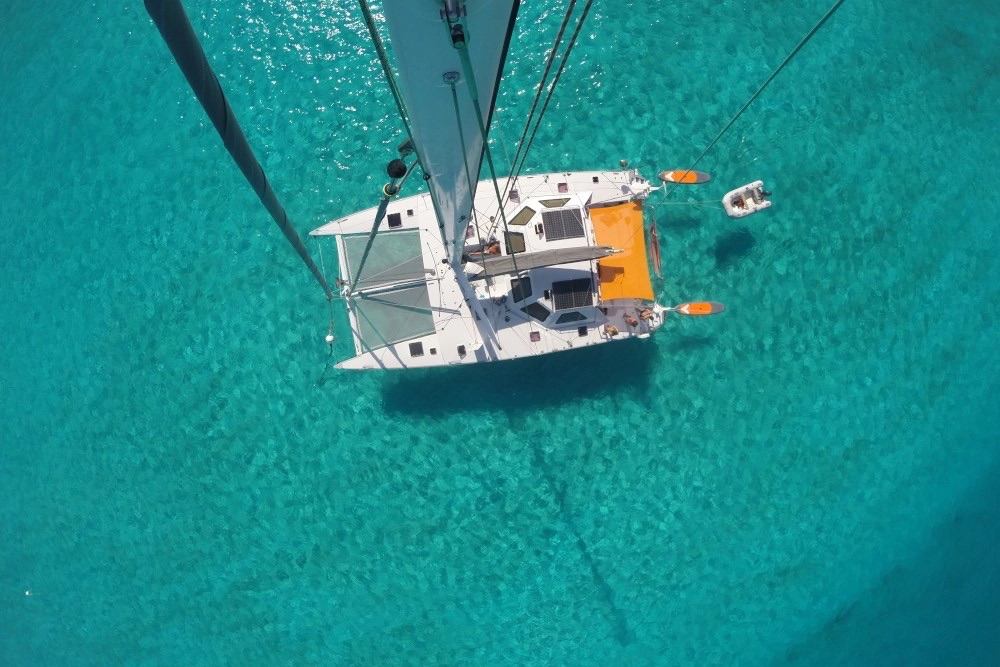
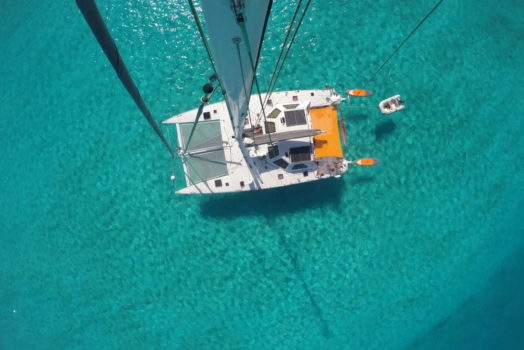
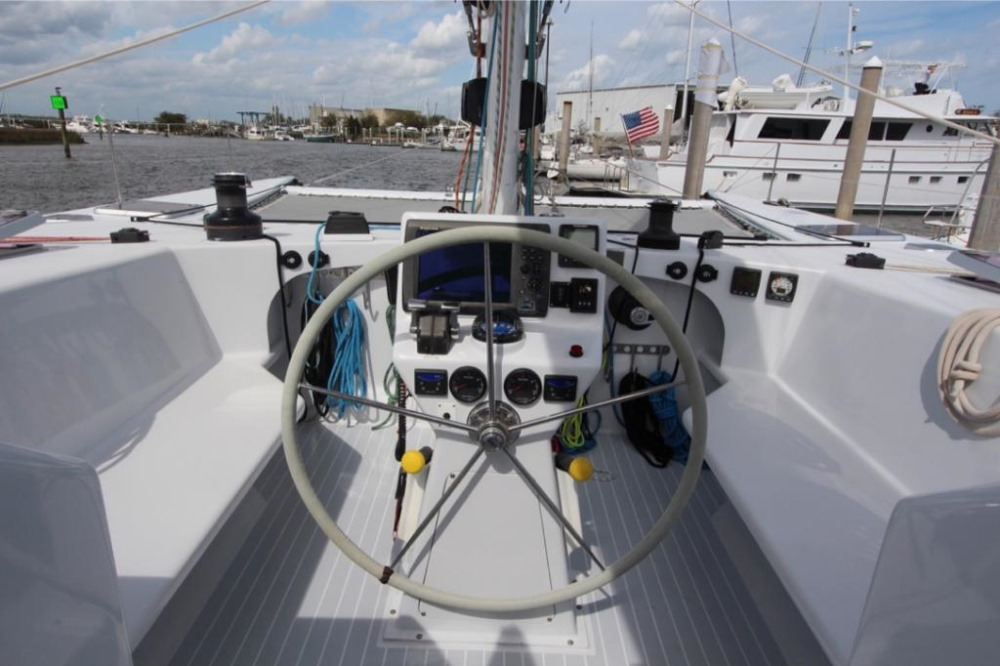
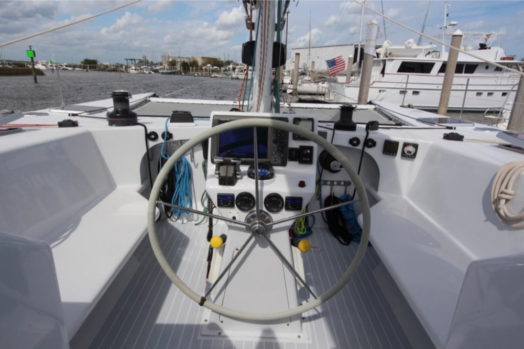
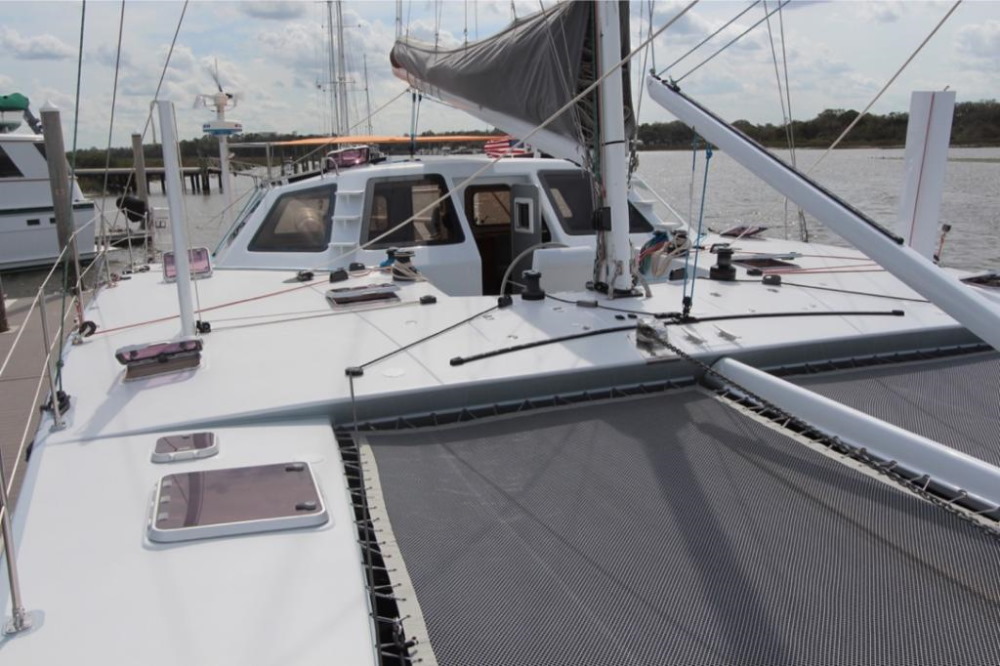
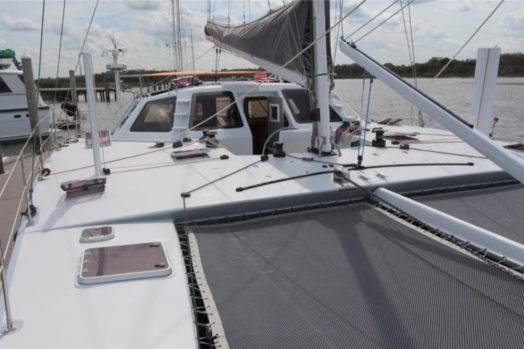
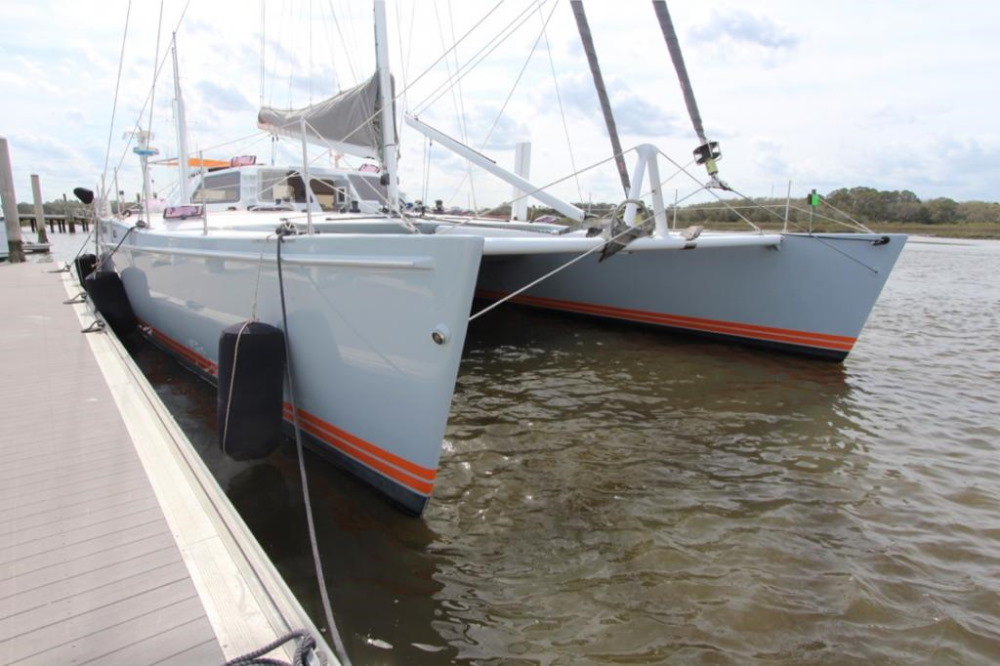
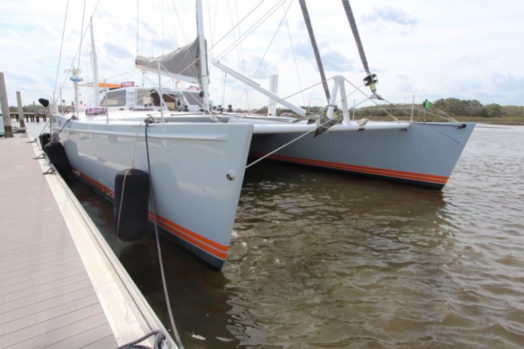
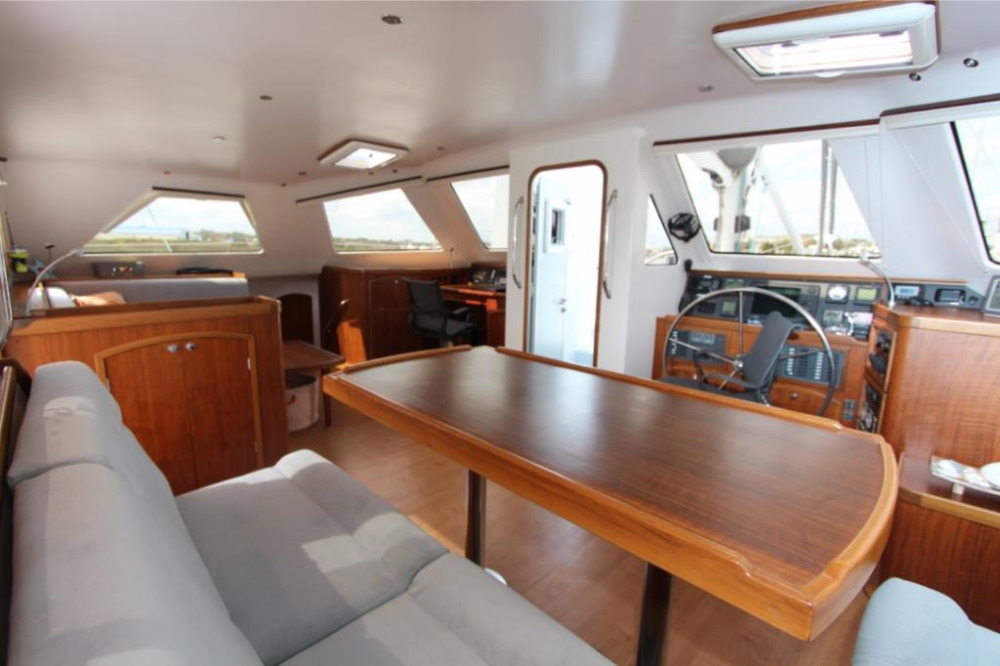
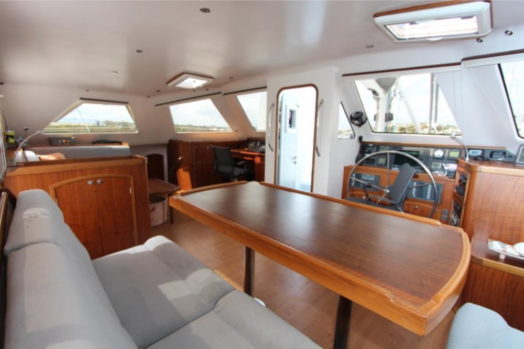
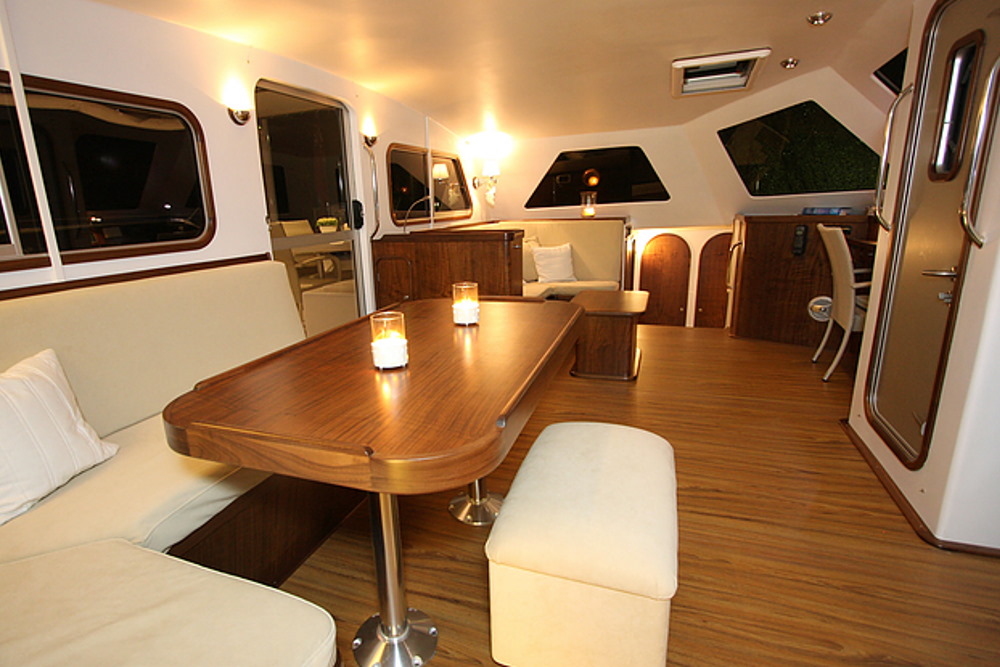
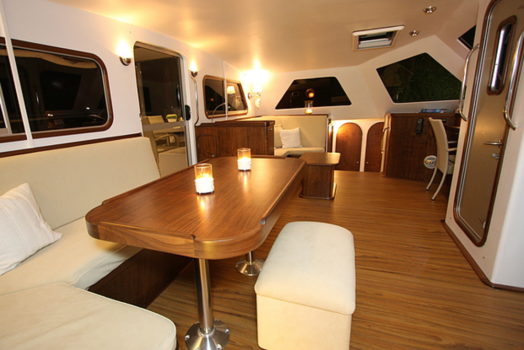
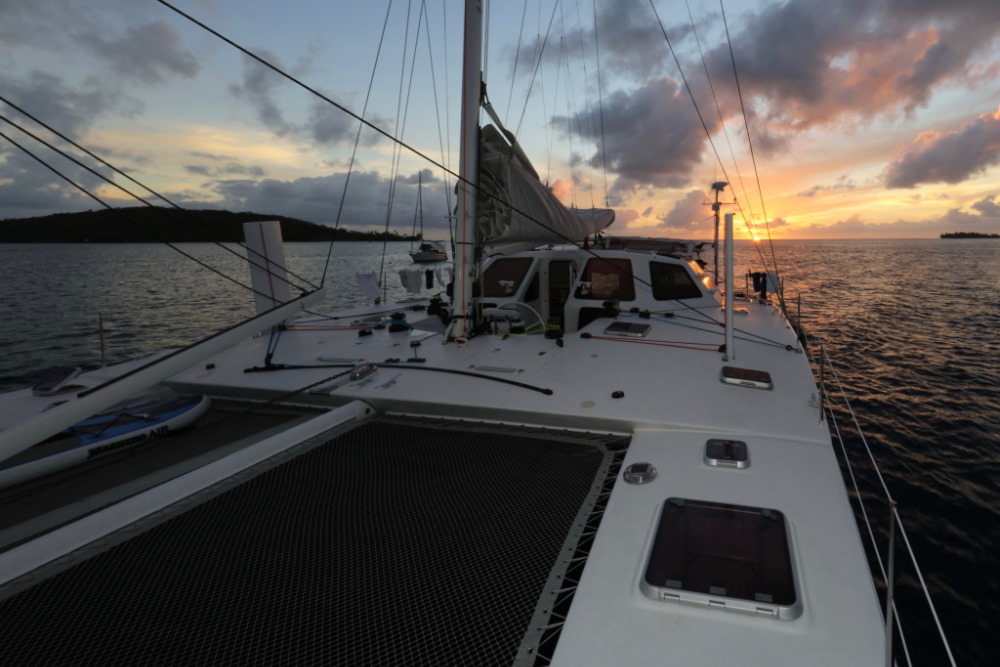
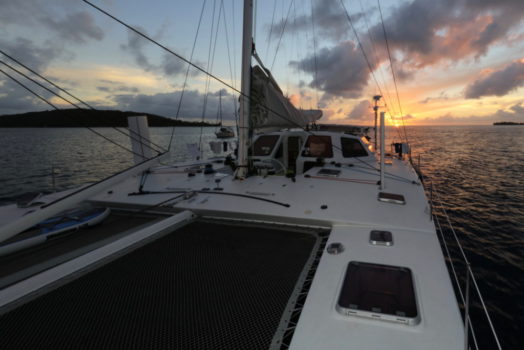
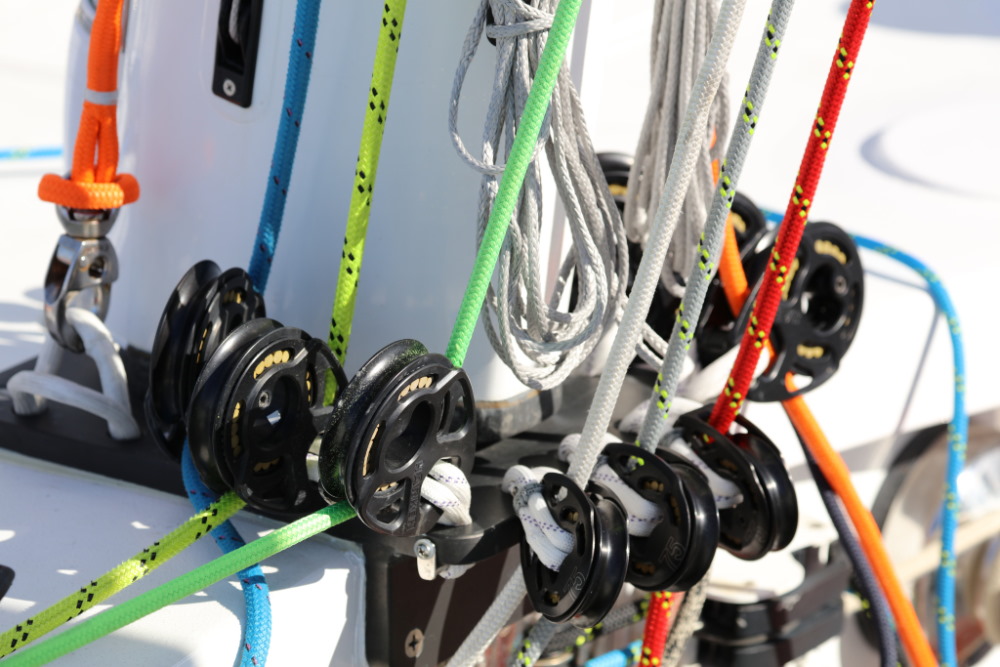
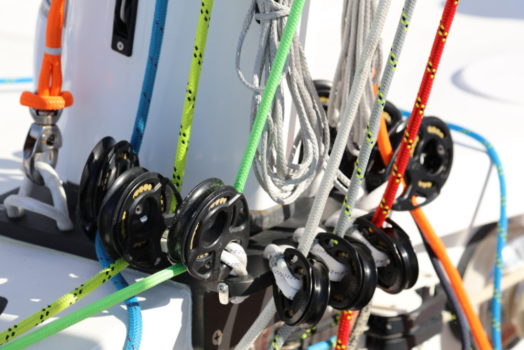
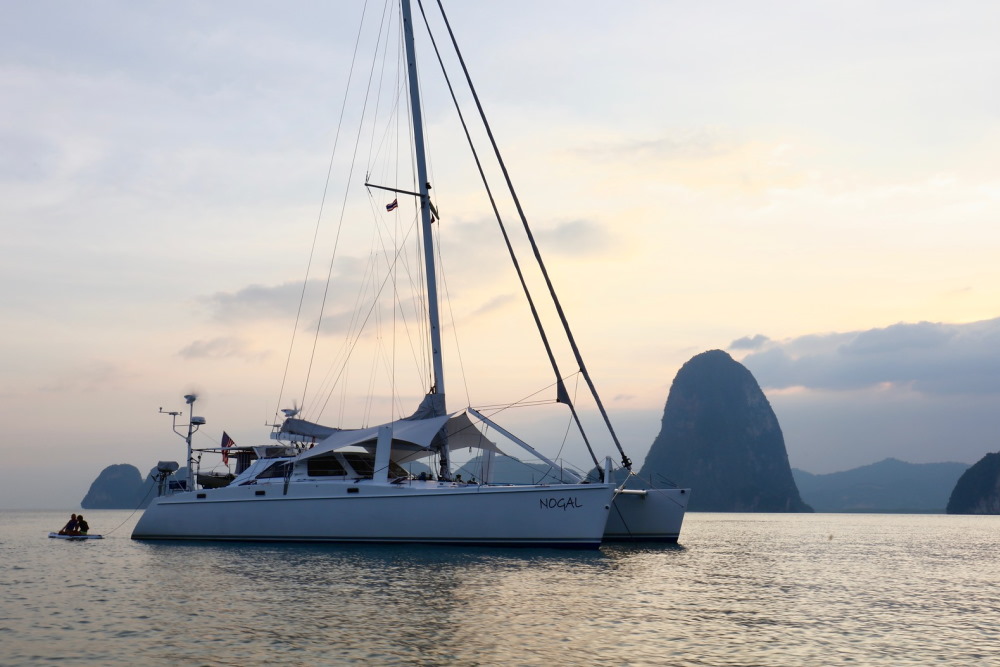
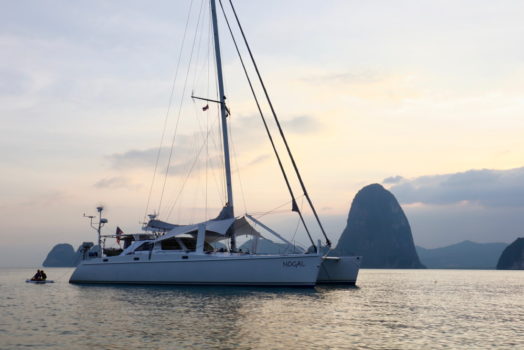
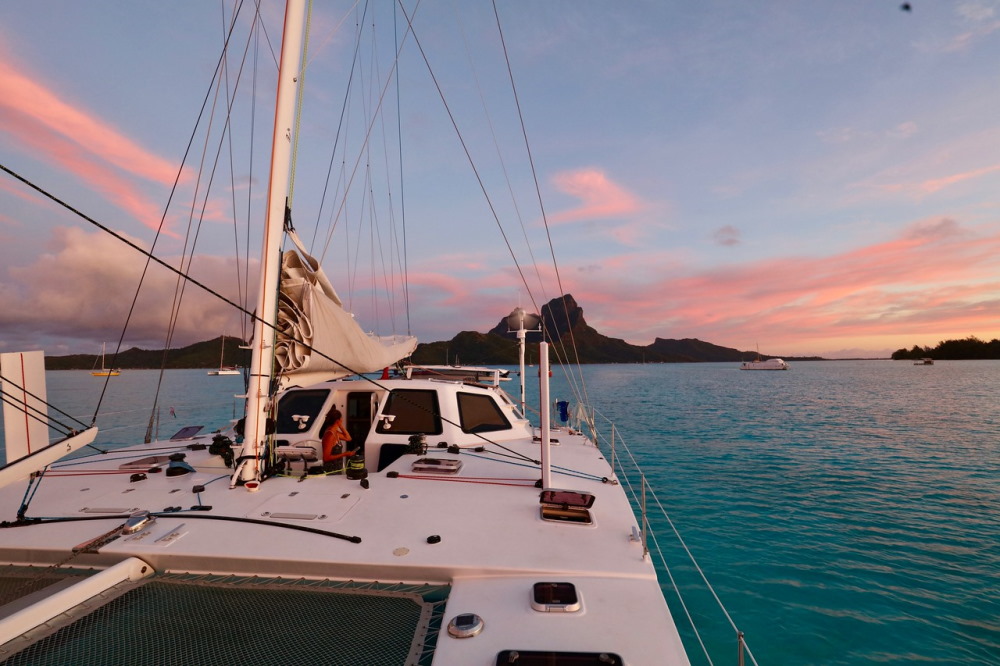
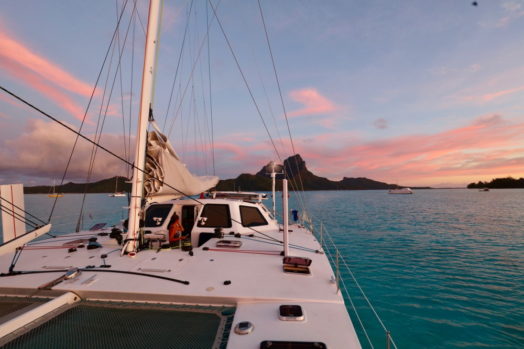
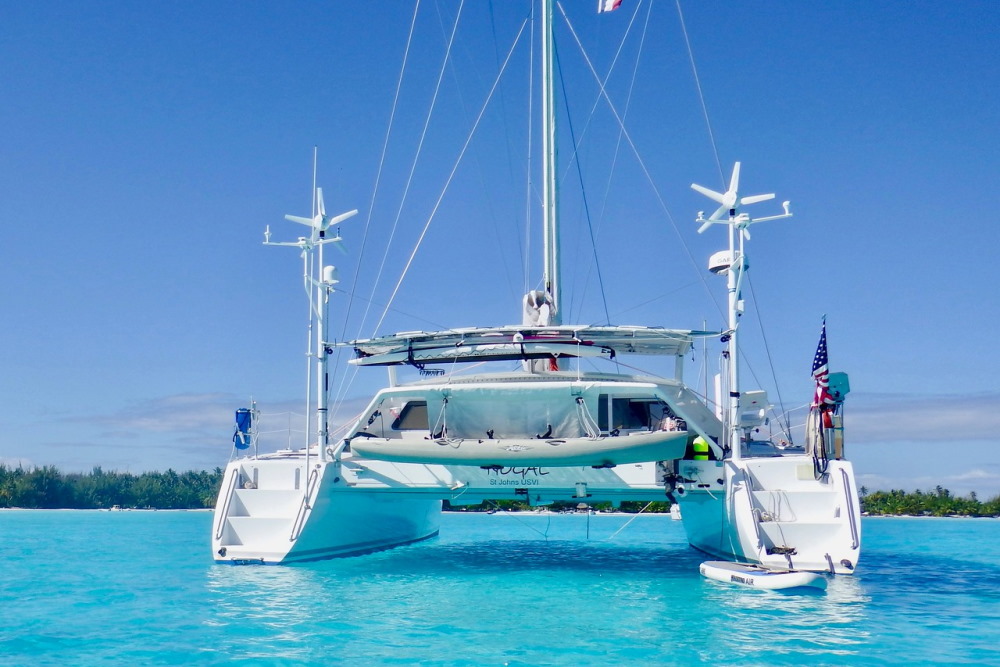
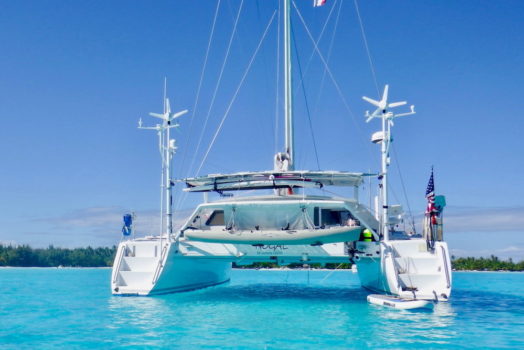
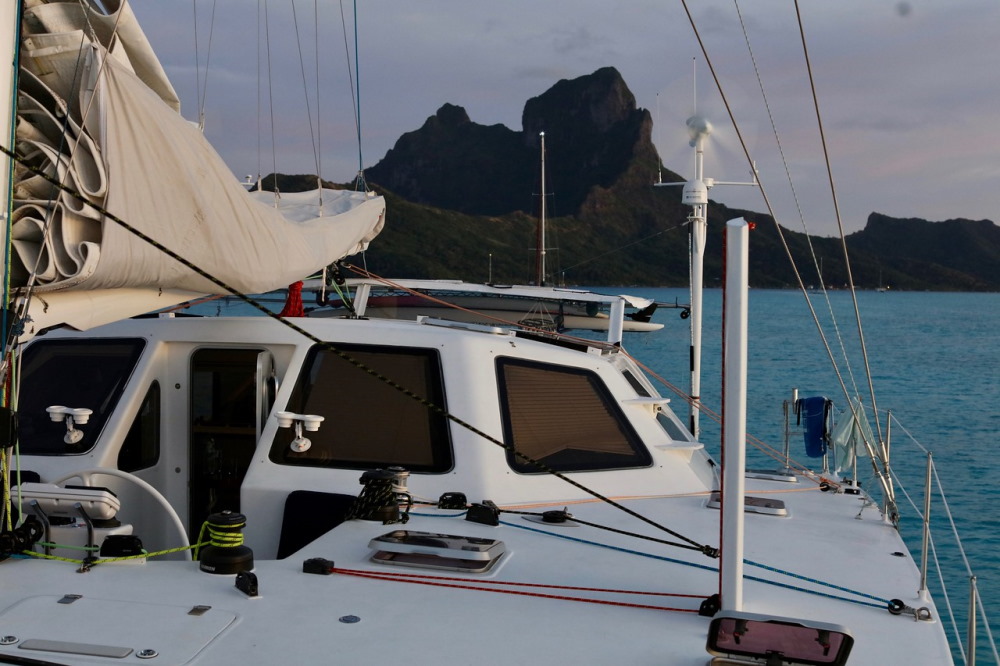
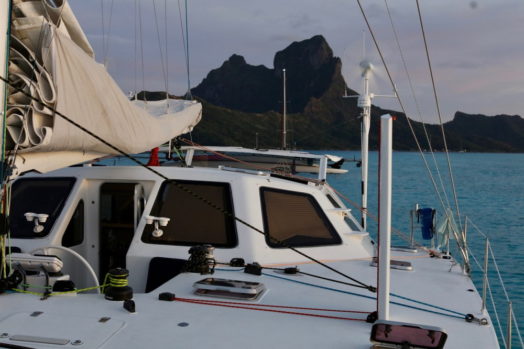
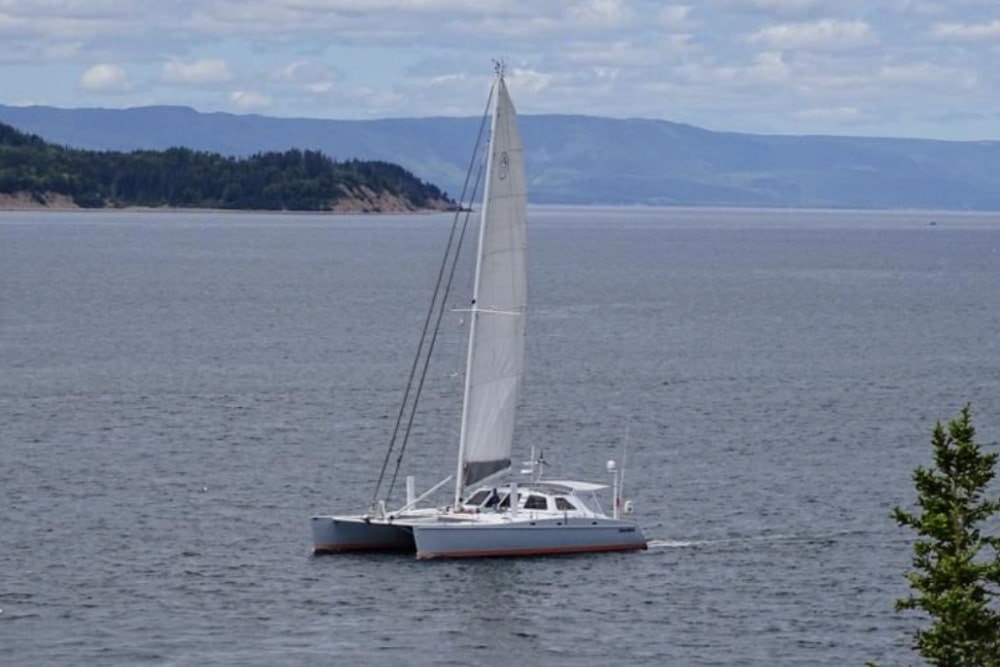
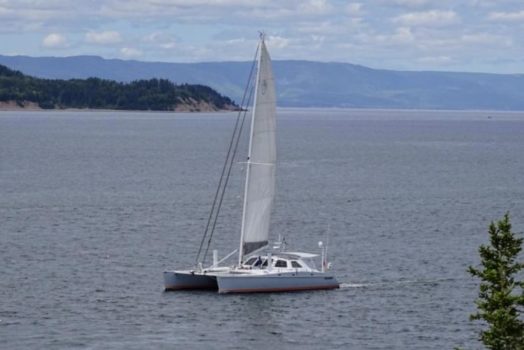
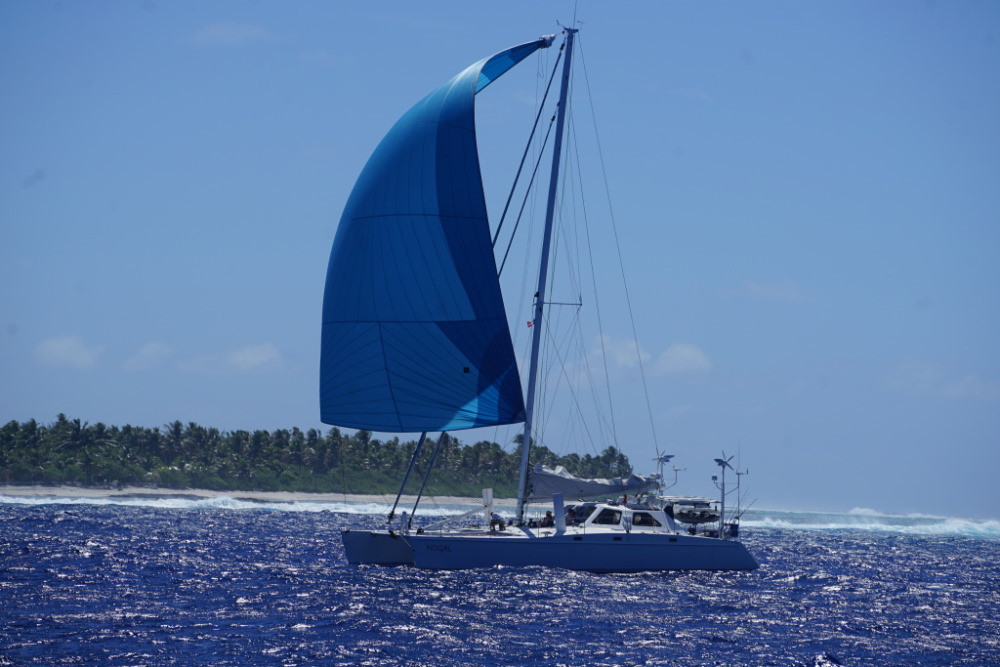
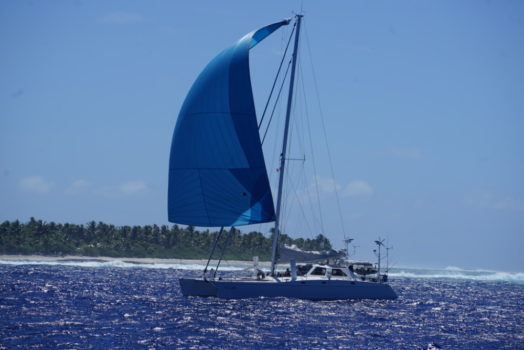
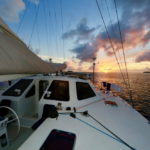
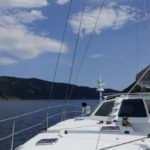

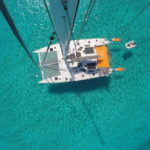
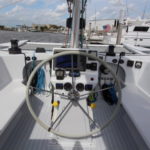
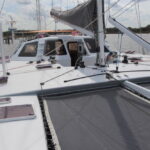
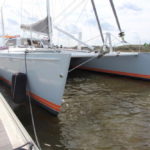
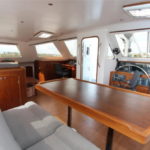
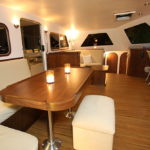
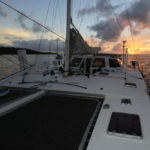
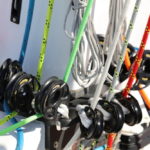
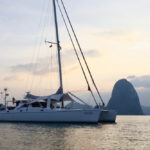
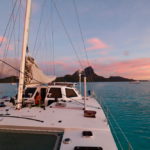
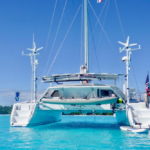
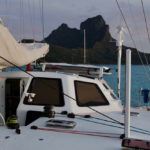
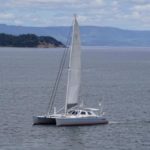
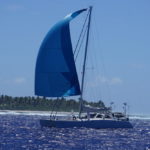
 There are various yards around the world that are skilled at bringing these designs to life, principally Alwoplast in Chile and others on the east and west coasts of the US (Aquidneck Custom Composites), and in South Africa. She is built with epoxy resin, triaxial E-glass, and Core-Cell and AirLite foams.
There are various yards around the world that are skilled at bringing these designs to life, principally Alwoplast in Chile and others on the east and west coasts of the US (Aquidneck Custom Composites), and in South Africa. She is built with epoxy resin, triaxial E-glass, and Core-Cell and AirLite foams. The wheel and all of the sail handling is located in front of the saloon, behind the mast.
The wheel and all of the sail handling is located in front of the saloon, behind the mast. Both hulls have spacious master cabins with a roomy vanity and head amidships. The configuration is galley down, with plenty of working space and room for your cooking, cooling and freezing equipment in the starboard hull. In the port hull, in place of the galley you have room for more berths, an office or a work area for all of your tools. And aft, both hulls have a double berth with a dresser, seat, and locker. Up front in the forepeaks, you´ve got plenty of space to store you sails and fenders.
Both hulls have spacious master cabins with a roomy vanity and head amidships. The configuration is galley down, with plenty of working space and room for your cooking, cooling and freezing equipment in the starboard hull. In the port hull, in place of the galley you have room for more berths, an office or a work area for all of your tools. And aft, both hulls have a double berth with a dresser, seat, and locker. Up front in the forepeaks, you´ve got plenty of space to store you sails and fenders.